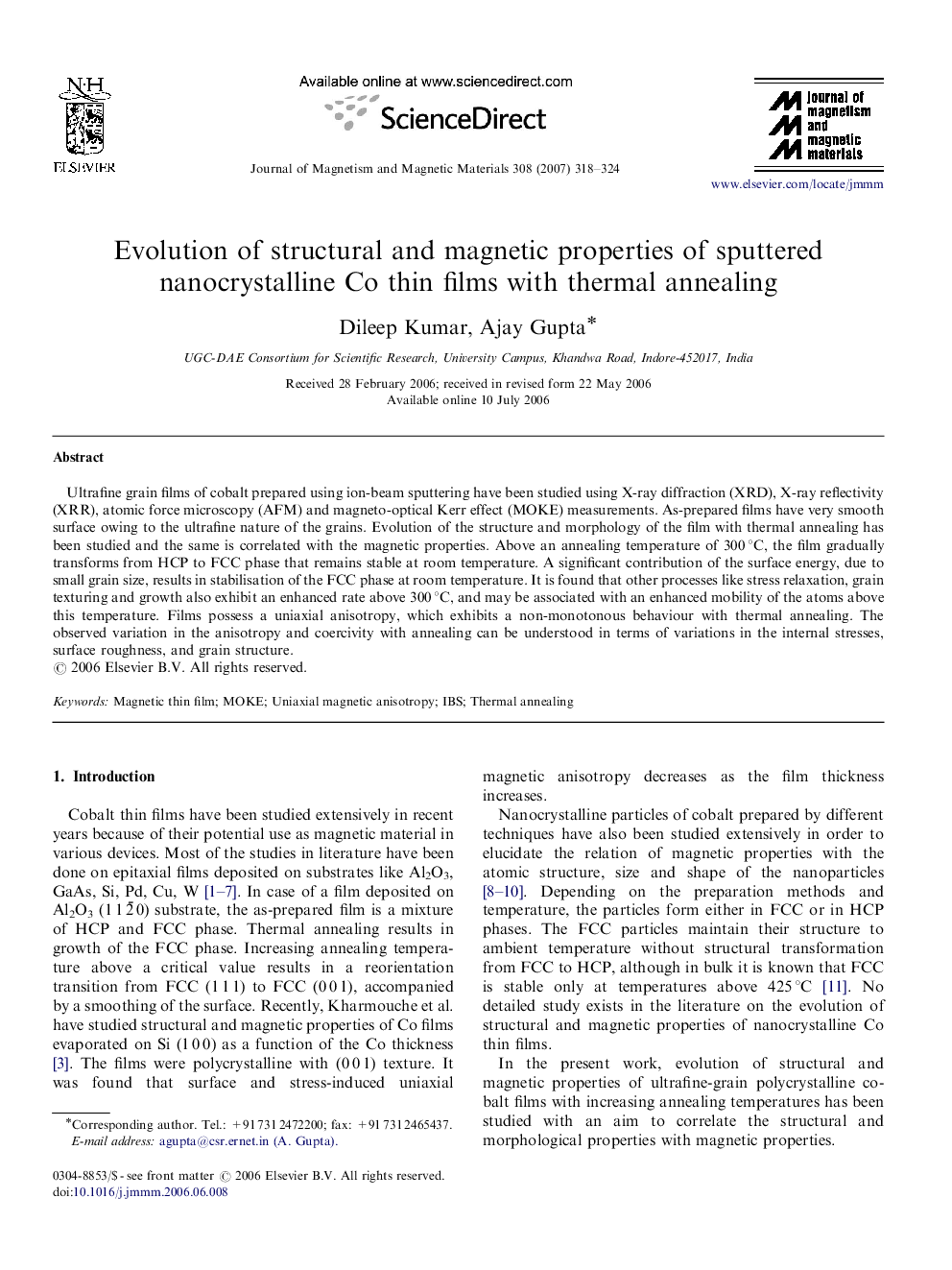| Article ID | Journal | Published Year | Pages | File Type |
|---|---|---|---|---|
| 1804842 | Journal of Magnetism and Magnetic Materials | 2007 | 7 Pages |
Ultrafine grain films of cobalt prepared using ion-beam sputtering have been studied using X-ray diffraction (XRD), X-ray reflectivity (XRR), atomic force microscopy (AFM) and magneto-optical Kerr effect (MOKE) measurements. As-prepared films have very smooth surface owing to the ultrafine nature of the grains. Evolution of the structure and morphology of the film with thermal annealing has been studied and the same is correlated with the magnetic properties. Above an annealing temperature of 300 °C, the film gradually transforms from HCP to FCC phase that remains stable at room temperature. A significant contribution of the surface energy, due to small grain size, results in stabilisation of the FCC phase at room temperature. It is found that other processes like stress relaxation, grain texturing and growth also exhibit an enhanced rate above 300 °C, and may be associated with an enhanced mobility of the atoms above this temperature. Films possess a uniaxial anisotropy, which exhibits a non-monotonous behaviour with thermal annealing. The observed variation in the anisotropy and coercivity with annealing can be understood in terms of variations in the internal stresses, surface roughness, and grain structure.
